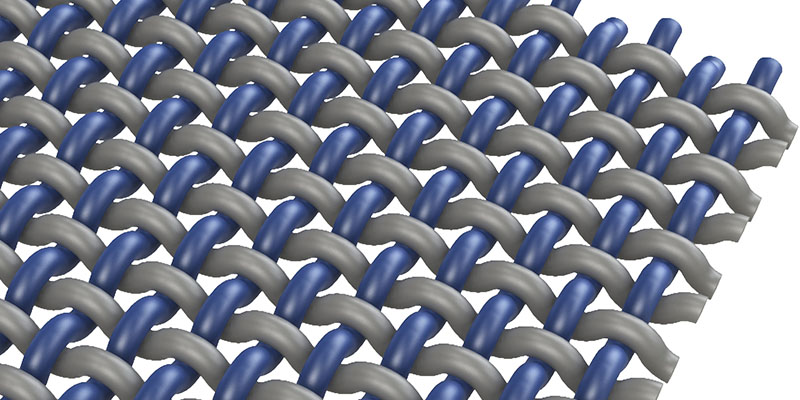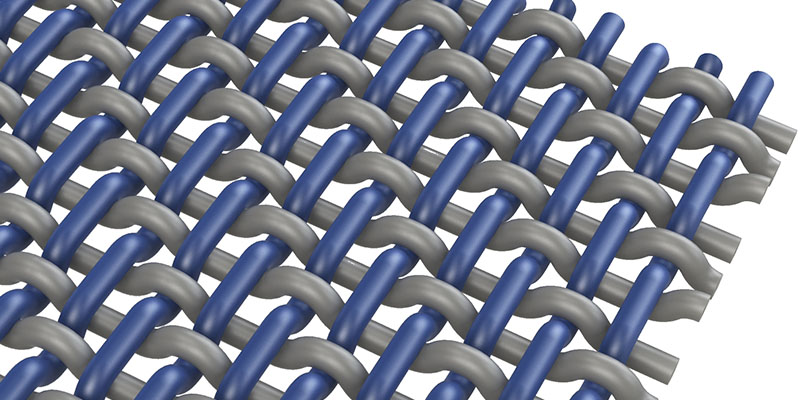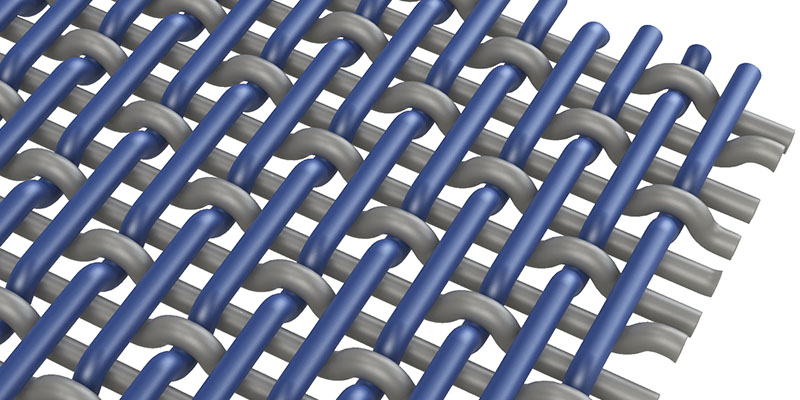Textile engineering VI –
plain, twill, satin
2021-10-04
Weaving techniques and their features in Textile Engineering
Two yarn systems cross in a woven textile engineering – the warp and the weft. The two systems are at a 90° angle to one another. Where warp and weft threads cross, either the warp thread lies above the weft thread (warp lift) or the weft thread lies above the warp thread (warp drop).
By combining warp lifts and drops in different ways, a myriad of textile constructions can be created. Three basic weaves are distinguished in textile engineering. The three weaving techniques not only influence the aesthetics and feel, but also the technical properties of a textile. For example, the type of weave affects how strong the fabric is, how drapable and how permeable it is.

Plain weave: warp lifts and warp drops form a kind of chequerboard pattern.
Plain: high stability
In a plain weave, the threads of the two yarn systems cross at a ratio of 1 to 1. Each warp lift is followed by a warp drop. As a result, plain weaves have the highest crossing density. At the same time, this technique makes for the waviest threads (thread ondulation). Woven textiles in a plain weave have a particularly high displacement stability.

Twill weave: the evenly staggered repeat of one warp lift and multiple warp drops creates a diagonal textile structure.
Twill: high density
In twill weave, the threads follow an evenly recurring repeat, e.g. one warp lift is followed by two warp drops. This results in a diagonal structure of the textile surface. The twill weave allows for a higher thread density of the fabric and is used for jeans fabrics.

Satin weave: A warp lift is followed by several warp drops. This creates a particularly smooth surface.
Satin: smooth surface
In a satin weave fabric, there are mainly warp threads on one side and mainly weft threads on the other. This is because each warp lift is followed by at least two warp drops and the weaves of a weft row are offset to the weaves of the following row such that the weave points do not touch – unlike in the twill weave. This results in fewer binding points all told. This means that a high thread density in both directions and a particularly smooth surface can be produced. Satin fabrics are less resistant to shifting and have good draping properties.
Photos, Illustrations: JUMBO-Textil




